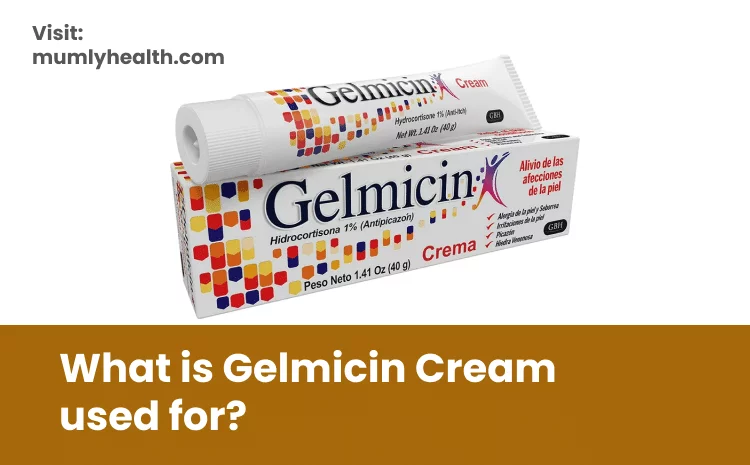Gelmicin is a well-known topical medication that has gained popularity for its effectiveness in treating a variety of skin conditions.
Whether you’re dealing with a pesky fungal infection, bothersome inflammation, or minor skin discomfort, Gelmicin might just be the solution you’ve been searching for.
In this article, we will delve into the depths of Gelmicin’s capabilities, exploring its ingredients, its role in treating various skin issues, precautions for use, and even some alternative options to consider. Let’s embark on a journey to uncover the many facets of Gelmicin and its potential benefits.
Composition and Ingredients
At the heart of Gelmicin’s effectiveness lie its carefully selected active ingredients. This unique formulation combines three key components: clotrimazole, betamethasone dipropionate, and gentamicin sulfate. Clotrimazole is renowned for its antifungal properties, making it a valuable tool in combating fungal infections.
Betamethasone dipropionate contributes powerful anti-inflammatory effects, soothing redness and swelling.
Gentamicin sulfate acts as an antibiotic, targeting bacterial infections that may be present on the skin’s surface. Together, these ingredients create a potent blend that addresses a range of skin concerns.
Treatment of Skin Infections
Understanding Skin Infections: Skin infections can manifest in various forms, often characterized by itching, redness, inflammation, and sometimes the presence of sores or blisters. These infections can be caused by bacteria, fungi, viruses, or other pathogens that invade the skin’s protective barrier. Among the most common skin infections are fungal infections like athlete’s foot and ringworm, as well as bacterial infections like impetigo.
Gelmicin’s Multi-Faceted Approach: Gelmicin’s effectiveness in treating skin infections can be attributed to its unique combination of active ingredients: clotrimazole, betamethasone dipropionate, and gentamicin sulfate. Each ingredient plays a specific role in addressing the various aspects of skin infections, providing a comprehensive and targeted solution.
- Clotrimazole: This antifungal agent is a cornerstone of Gelmicin’s formula, effectively combating fungal infections by inhibiting the growth and spread of fungi. It targets the fungal cells’ integrity, preventing them from multiplying and causing further damage. Clotrimazole is particularly effective against common fungal culprits like Candida and Trichophyton species.
- Betamethasone Dipropionate: As an anti-inflammatory ingredient, betamethasone dipropionate helps reduce swelling, redness, and itching associated with skin infections. It works by suppressing the body’s immune response, thereby mitigating the inflammatory cascade that contributes to discomfort.
- Gentamicin Sulfate: With its antibacterial properties, gentamicin sulfate steps in to combat bacterial infections that may accompany or exacerbate skin conditions. It targets a wide range of bacteria, hindering their growth and aiding in the healing process.]
Possible Side Effects
While Gelmicin is generally considered safe and effective for treating various skin conditions, there are potential side effects that users should be aware of. It’s essential to be informed about these possible reactions to ensure a safe and comfortable experience.
- Skin Irritation: Mild redness, itching, burning, or stinging at the application site can occur. These symptoms are often transient and may subside as your skin becomes accustomed to the medication.
- Allergic Reactions: While rare, some individuals may develop an allergic reaction to one or more ingredients in Gelmicin. Signs of an allergic reaction may include swelling, severe itching, rash, hives, or difficulty breathing. If you experience any of these symptoms, discontinue use and seek medical help immediately.
- Thinning of the Skin: Prolonged or excessive use of Gelmicin, especially on thin or sensitive skin areas, can lead to skin thinning. This is more likely to occur with prolonged use, improper application, or use of occlusive dressings.
- Skin Discoloration: In some cases, Gelmicin may cause changes in skin pigmentation at the application site. This is more commonly observed with extended use.
- Delayed Wound Healing: Overuse of topical corticosteroids like betamethasone dipropionate (an ingredient in Gelmicin) can potentially slow down the healing process of wounds or sores.
Read Also: Appetivit plus: Things to know
Anti-Inflammatory Properties
Inflammation is a common factor in many skin conditions, from eczema to psoriasis. Gelmicin’s betamethasone dipropionate plays a pivotal role in reducing inflammation, alleviating itching, redness, and discomfort.
By targeting the inflammatory response, Gelmicin provides relief to those suffering from these conditions, promoting healthier and more comfortable skin.
Precautions and Proper Usage
While Gelmicin offers numerous benefits, it’s essential to use it correctly and responsibly. Before applying Gelmicin, consult a healthcare professional to ensure it’s appropriate for your specific condition.
Follow the recommended application guidelines, which usually involve applying a thin layer to the affected area and gently massaging it in. Remember that Gelmicin is for external use only and should not be ingested or used on open wounds.
Conclusion
Gelmicin stands as a multifaceted solution for various skin concerns, from infections to inflammation and discomfort.
Its unique combination of active ingredients offers a comprehensive approach to managing a range of skin conditions.
Before incorporating Gelmicin into your skincare routine, remember to consult a medical professional and adhere to proper usage guidelines.
With its potential to bring relief and promote healthier skin, Gelmicin remains a valuable tool in the realm of dermatological care.

